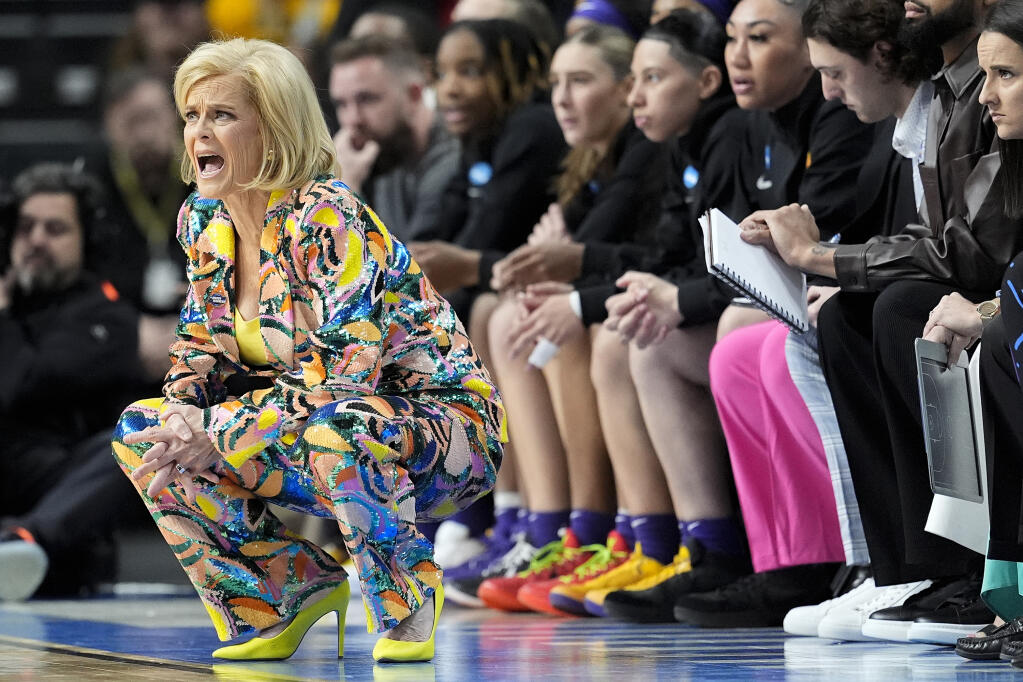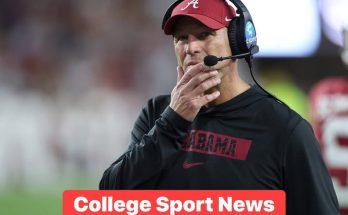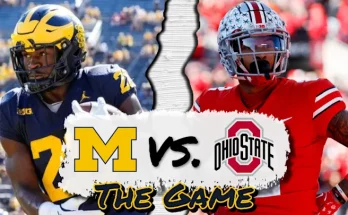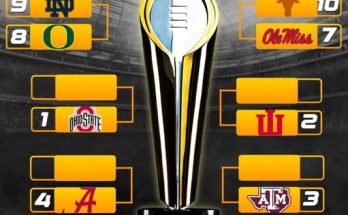The ‘broken’ NCAA landscape presents issues, according to Kim Mulkey of LSU. “Why do I continue to do this?”
The NCAA landscape has long been a subject of debate, with its structure and governance under scrutiny for various reasons. Recently, LSU women’s basketball coach Kim Mulkey voiced her frustrations, questioning, “Why do I continue to do this?” Mulkey, a highly successful coach with numerous accolades, has seen firsthand how the evolving landscape of college sports—particularly in women’s basketball—has shifted in ways that create both opportunities and challenges. This article aims to unpack Mulkey’s statement, explore the broader context of the broken NCAA landscape, and examine the issues plaguing college sports, using Mulkey’s perspective as a lens for understanding the deeper complexities at play.
The Changing Landscape of College Sports
To understand why Mulkey’s question resonates, we need to first look at the changing landscape of college sports. Over the past few decades, college athletics, particularly basketball, have experienced significant transformation. The NCAA, once the undisputed authority in regulating and overseeing college sports, has seen its influence erode due to various external factors, such as the rise of the transfer portal, NIL (Name, Image, and Likeness) deals, and the increasing commercialization of college sports.
1. The Rise of NIL: A Double-Edged Sword
The introduction of NIL rights, which allows student-athletes to profit from their name, image, and likeness, was heralded as a breakthrough for college sports. No longer bound by the amateurism model that kept athletes from profiting off their success, NIL has allowed college athletes to sign endorsement deals, create personal brands, and earn money through social media and other platforms. However, this newfound freedom has also led to unintended consequences.
For coaches like Kim Mulkey, NIL has brought about a range of challenges. While it’s an opportunity for athletes, it also creates an imbalance. Top-tier players in popular sports, like basketball and football, can command lucrative deals, while athletes in less visible sports may struggle to gain traction. This creates a disparity, both between sports and individual athletes, leading to tension and frustration among those trying to maintain a level playing field. Mulkey, known for her competitive spirit and commitment to her athletes, likely sees the disparities created by NIL as something that can negatively impact team dynamics and the overall integrity of college sports.
2. The Transfer Portal and Its Impact
Alongside NIL, the introduction of the transfer portal has been another major shift in the NCAA landscape. The transfer portal allows athletes to freely move between schools, transferring without penalty as long as they are academically eligible. On the surface, this seems like a positive step for athletes seeking better opportunities or a change of scenery. However, it has also created a chaotic environment where teams and rosters are in constant flux.
Mulkey, who has built her success at LSU on the foundation of consistency and player development, likely sees the transfer portal as a challenge. Coaches are now faced with the reality of recruiting their own players year after year, unsure if they will stay or leave. For a coach who takes pride in cultivating a strong team culture, the instability that comes with the transfer portal can be disheartening. This uncertainty can also impact recruiting, as athletes may be hesitant to commit to a program if they know they have the option to leave at any time.
3. The Power of the Media and Commercialization of College Sports
Another issue in the broken NCAA landscape is the growing commercialization of college sports. The rise of media deals, broadcasting rights, and corporate sponsorships has created a situation where college sports, especially basketball and football, are increasingly treated as professional leagues. While this has led to increased visibility and financial opportunities, it has also placed immense pressure on athletes, coaches, and institutions.
Kim Mulkey, who has coached at both Baylor and LSU, has witnessed firsthand the way media attention and commercial pressures can affect the culture of a team and the priorities of the players. While the media’s involvement has raised the profile of women’s sports, particularly with the explosive growth of the NCAA Women’s Basketball Tournament, it has also increased expectations and amplified the stakes. Coaches like Mulkey are constantly navigating these pressures, balancing the demands of winning with the realities of an ever-more commercialized environment.
4. The Shifting Definition of Amateurism
The NCAA has long held onto the concept of amateurism—an idea that athletes should not be paid directly for their participation in college sports. However, as the landscape of college athletics evolves, this definition has come under intense scrutiny. The NCAA’s inability to adapt quickly enough to the changing environment has led to lawsuits, policy changes, and confusion.
For coaches like Kim Mulkey, the shifting definition of amateurism poses significant challenges. On one hand, Mulkey, who has seen her share of success in NCAA tournaments, has likely benefited from the structure that amateurism once provided. On the other hand, she understands the evolving needs of her athletes, who now have greater autonomy in how they manage their careers and finances. The tension between maintaining the ideals of amateurism and embracing the new realities of college sports has left many wondering what the future holds for both coaches and players.
The Consequences of a Broken System
The broken NCAA landscape, as Kim Mulkey alluded to with her rhetorical question, “Why do I continue to do this?” is fraught with complications. There are several key consequences to the current state of college athletics.
1. Impact on Coaching Stability
One of the most significant consequences of the shifting landscape is the impact on coaching stability. Coaches like Mulkey have dedicated their careers to building successful programs and developing athletes both on and off the court. However, the constant changes in rosters due to the transfer portal, the pressures of NIL deals, and the need to constantly adapt to the changing rules of the NCAA make it harder to sustain long-term success.
Coaches may find themselves in an environment where their ability to build and maintain a team culture is undermined by the constant influx and departure of athletes. The result can be burnout and frustration, especially for coaches who take great pride in the development of their players. Mulkey’s question, “Why do I continue to do this?” may reflect the emotional toll of trying to navigate this volatile environment.
2. Diminished Player Loyalty and Team Chemistry
The increased mobility of players, facilitated by the transfer portal and NIL opportunities, can lead to a lack of player loyalty and team chemistry. In the past, athletes may have been more inclined to stick with a program for the long haul, even if things weren’t going perfectly. Today, players may leave for better NIL opportunities, more playing time, or a higher-profile team. This constant churn disrupts the stability of rosters and makes it more difficult for coaches to foster a strong sense of unity and teamwork.
For Mulkey, a coach known for building close-knit teams, this is a significant challenge. The erosion of team chemistry, which is crucial for success in any sport, can be especially difficult to manage when athletes are constantly on the move. The result is an environment where success is harder to achieve, and the emotional connection between players and coaches may be weakened.
3. The Strain on Mental Health
The changing nature of college athletics, combined with the pressures of NIL deals, media attention, and constant roster turnover, has placed a significant strain on the mental health of both athletes and coaches. Mulkey, like many other coaches, is likely concerned about the toll that these pressures are taking on her players. The constant scrutiny, the fear of losing a scholarship or playing time, and the pressure to succeed can be overwhelming.
For Mulkey, who has long been a mentor to her players, this presents a challenge. Coaches now find themselves balancing the demands of their athletes’ mental well-being with the intense competitive environment in which they operate. The broken NCAA landscape has exacerbated these challenges, making it harder for coaches to prioritize the holistic development of their athletes.
The Future of College Sports
Kim Mulkey’s question, “Why do I continue to do this?” encapsulates the frustrations that many in the college sports world are feeling in the face of a rapidly changing and increasingly fractured landscape. The NCAA, which once held a dominant position in college athletics, now faces a range of challenges that threaten the integrity of the system. From the rise of NIL and the transfer portal to the commercialization of college sports, the current environment is far from what it once was.
For coaches like Mulkey, who have dedicated their lives to building successful programs and developing young athletes, the question is not just rhetorical—it’s a reflection of the difficult realities of navigating this new world. As the NCAA continues to grapple with these issues, the future of college sports remains uncertain. The hope is that solutions can be found that preserve the integrity of the game while also adapting to the evolving needs of athletes, coaches, and fans alike. Until then, Mulkey’s question may serve as a poignant reminder of the emotional and professional toll that comes with working within a broken system.



